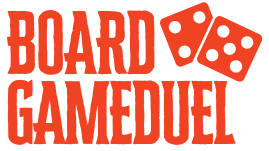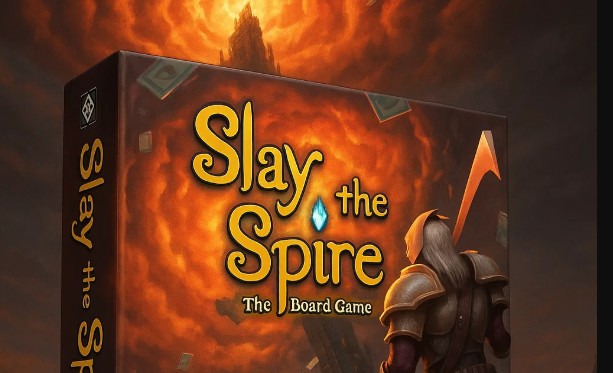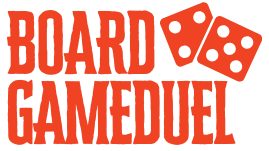I’ve been a fan of the digital deckbuilder genre for years, so when I heard about the Slay the Spire board game, I was instantly intrigued. Could a tabletop version really capture the addictive strategy and rogue-like tension of the original? After spending hours with it—both solo and with friends—I’m ready to share everything I’ve learned, what I loved, and where it surprised me.
What Is Slay the Spire: The Board Game?
At its core, the Slay the Spire board game is a cooperative deckbuilding adventure based on the smash-hit video game. Designed for 1–4 players, you take on the role of one of the iconic characters—Ironclad, Silent, Defect, or Watcher—and climb through procedurally generated acts full of enemies, relics, and loot. The goal? Survive all three acts and defeat the final boss, all while managing your health, deck, and synergies.
How Does It Stay True to the Original Video Game?
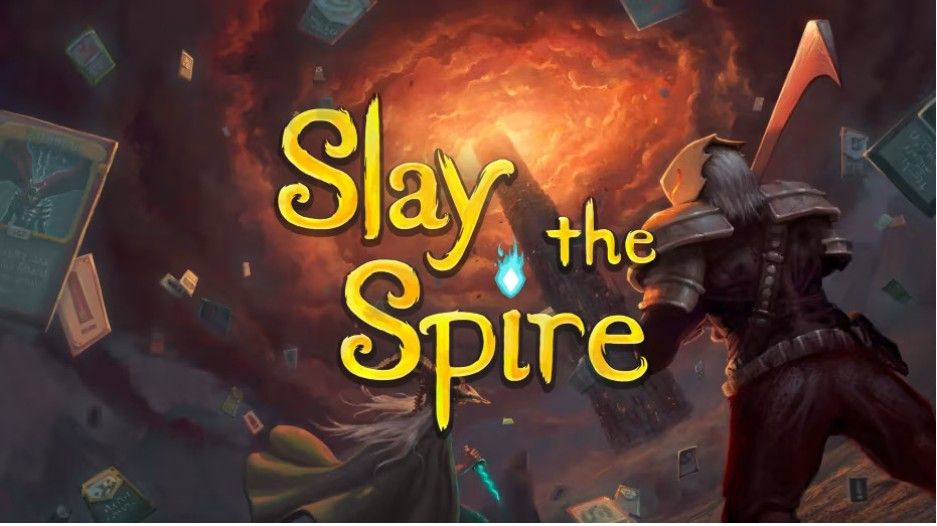
Source : Nintendo
The designers did an impressive job translating digital mechanics to cardboard. You still collect cards, manage energy, build combos, and navigate a branching map. Relics feel impactful, potions add tactical variety, and bosses have their signature patterns. If you’re like me and have hundreds of hours in the digital version, you’ll appreciate the faithful adaptation.
Let’s Talk Gameplay: How It Actually Feels to Play
Now this is where things get exciting. The Slay the Spire board game is a turn-based co-op experience that balances tight strategy with a sense of improvisation. When it’s your turn, you draw a hand of cards from your deck—just like in the video game—and use energy to play attacks, skills, or powers. But instead of going solo, you’re coordinating with other players to take down increasingly brutal enemies.
Each battle is laid out in a grid-style arena where enemy intentions are shown in advance. This gives you room to plan with your team: Should we debuff that elite before it buffs itself? Can someone block the incoming 20 damage? Can we take it out this turn? These discussions happen constantly, and they’re half the fun.
One of the coolest aspects is how different each character feels. Ironclad can soak up damage and hit hard, Silent builds up poison and evasion, Defect manages orbs for passive effects, and Watcher dances between Calm and Wrath stances. The interplay between these mechanics really shines during co-op games, where building complementary decks can be the difference between victory and defeat.
And the map! Oh man, just like the video game, you get to choose your route—question marks, treasure, campfires, elite fights—and that adds a layer of replayability. One run might be full of mystery rooms and low fights, while another throws you into the fire early on.
Then there are the relics. These passive upgrades are absolute game-changers. I once pulled a relic that gave me extra energy every time I played three attacks in a turn—suddenly, my whole playstyle shifted. And that’s the heart of this game: adapting to what you draw, what you face, and what your deck becomes. Every choice matters.
To put it simply, gameplay is thoughtful, tense, and packed with memorable moments. Whether you win or lose, you’ll have stories to tell—and you’ll probably be eager to shuffle up and go again.
Solo Mode: Why It’s Surprisingly Addictive
I played my first few runs solo, and honestly, I was hooked. The game flows well, especially once you’re familiar with the system. I could manage everything on the table without feeling overwhelmed. Each decision felt personal, the stakes were high, and just like in the digital version, one bad card draw could end everything—but somehow, that made it more thrilling.
Playing Co-op: Better With Friends or Best Alone?
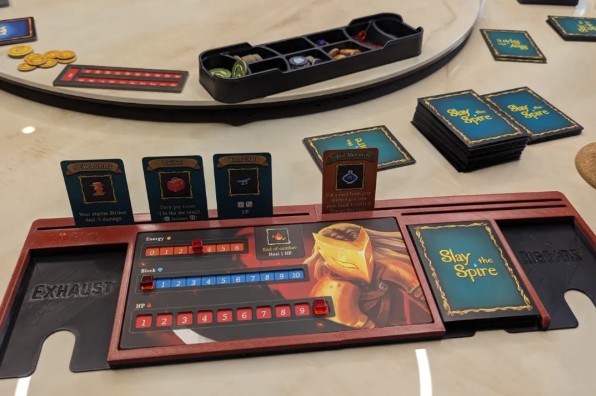
Source: Markerworld
With two to four players, it becomes a conversation-driven strategy game. There’s more planning involved, especially since some characters are better support, others are built for heavy damage. We found ourselves laughing, arguing, and high-fiving during big moments. Co-op mode does increase playtime, but for fans of strategic teamwork, it’s well worth it.
What’s Inside the Box? (Components Overview)

Source: Printables
The production quality blew me away. The box includes:
- Hundreds of full-art cards
- Double-sided player boards
- Custom tokens for energy, HP, and debuffs
- Modular dungeon tiles
- Miniatures and enemy boards
Everything feels premium, from the linen-finished cards to the slick visuals that mirror the original art style.
Kickstarter Success: Hype, Stretch Goals & Extras
The Kickstarter campaign for the Slay the Spire board game was a massive success, hitting over $4 million in pledges. Backers were promised upgraded components, additional bosses, and even expansion characters. If you missed it, there may still be late pledges or retail options coming soon through Contention Games.
How Does It Compare to Other Roguelike Board Games?
As someone who’s played titles like Aeon’s End and Too Many Bones, I can confidently say this game holds its own. Where it differs is in the way it encourages personal deck creativity and unpredictability. The branching paths feel more meaningful, and I never felt locked into a set strategy. Every run felt like a fresh puzzle to solve.
Who Should Buy This Game?
If you love the original video game, this is a no-brainer. If you enjoy challenging co-op games or are looking for a top-tier solo experience, it’s absolutely worth considering. However, if you prefer casual, quick-play board games, the learning curve and setup might not be for you.
My Honest Thoughts After Playing (Review Section)
Was it perfect? Not quite. The first game took a while to set up, and the rules take some time to digest. But once we got into the rhythm, it delivered one of the most satisfying board game experiences I’ve had in a while. It rewards replaying, thinking ahead, and clever deckbuilding. Every game felt like a story unfolding—sometimes victorious, often chaotic.
Final Verdict: Is Slay the Spire Board Game Worth It?
Yes—especially if you’re a fan of strategic board games or the original digital version. The Slay the Spire board game isn’t just a clone slapped on cardboard; it’s a thoughtful, challenging, and highly thematic experience. I’ll be playing this one for a long time.
Frequently Asked Questions
1. Is Slay the Spire board game good for solo play?
Yes! Solo play is one of the best ways to experience the game’s strategic depth and immersive mechanics.
2. How long does a game of Slay the Spire board game take?
Solo runs typically take about 45–60 minutes. Multiplayer games may stretch up to 2 hours depending on familiarity.
3. Is it difficult to learn the board game version?
It can be a bit overwhelming at first, especially for new players. But with one playthrough, things start to click.
4. What’s different between the video game and the board game?
Pacing is slower, and there’s more emphasis on planning and cooperation. But the core mechanics and deckbuilding heart are very much intact.
5. Will there be expansions for the board game?
Yes. Based on Kickstarter stretch goals and updates, more content and characters are already in development.
6. Where can I buy Slay the Spire: The Board Game now?
Check Contention Games’ website or look for late pledge options. Retail availability may follow Kickstarter fulfillment.
Feature Image credit: Amazon
